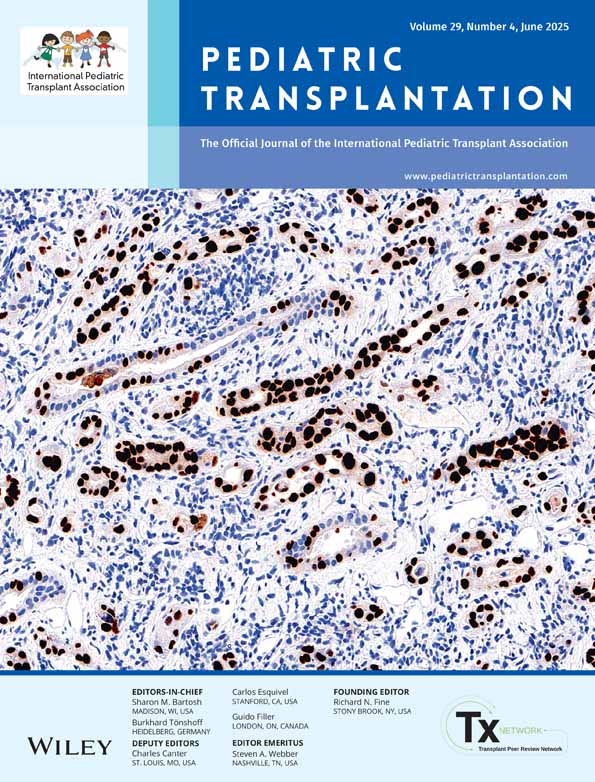Have Live Viral Vaccine Practices Among the Pediatric Liver Transplant Community Changed? A Survey Study of Pediatric Liver Transplant Centers Across the United States
Funding: This work was supported by the Agency for Healthcare Research and Quality.
ABSTRACT
Background
Expanded data regarding the safety and immunogenicity of live viral vaccines (LVV) during the posttransplant period has resulted in updated recommendations endorsing LVVs for select pediatric liver transplant (LT) recipients, a significant change from historical guidelines. The goal of this survey study was to understand current LVV practices among pediatric LT centers.
Methods
A 20-question email survey detailing center-specific pre- and post-LT LVV practices was distributed between May 1, 2024, and August 1, 2024, to a representative from each US center participating in the Society of Pediatric Liver Transplantation (SPLIT).
Results
The overall survey response rate was 95% (41/43 centers). In the pretransplant period, 85% of centers (35/41) administer LVVs starting at 6 months of age, 7% (3/41) wait until 9 months, and another 7% start at 12 months. The majority of centers (83%, 34/41) require a 4-week interval between LVVs and active transplant listing. In the posttransplant period, 39% of centers (16/41) never recommend LVVs, citing perceived limited safety data (63%, 10/16) and inability to reach provider consensus (31%, 5/16) as reasons. Among the 25 centers that offer LVVs, barriers faced in implementing LVV protocols include parental concerns about change from historical recommendation (48%, 12/25) and parental concerns about safety/efficacy (36%, 9/25).
Conclusions
The majority of pediatric LT centers across the US now recommend LVVs for select LT recipients. However, these centers face barriers in vaccinating all nonimmune eligible transplant recipients. Research is needed to understand and overcome barriers to widespread acceptance and implementation of evidence-based LVV recommendations.
Disclosure
The authors have nothing to report.
Open Research
Data Availability Statement
The data that support the findings of this study are available from the corresponding author upon reasonable request.




